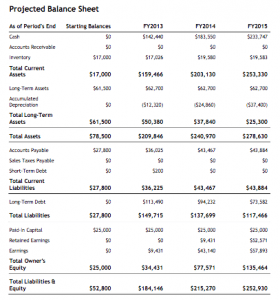
Cloud accounting is the practice of using an accounting system that’s accessed through the internet. This means that it can be accessed from anywhere which is perfect for remote workers or if a worker is on the road. Digital transformation is the process of moving your company over to a digital model, usually with cloud at the heart of your systems. When we created an invoice in Odoo, we found the form layout counterintuitive, especially on a mobile device. We also thought the bank reconciliation layout was confusing – line items aren’t presented in a direct one-to-one comparison.

Why You Can Trust Forbes Advisor Small Business
It also has a constant need for software updates and there is an ongoing cost of backing up years worth of financial information. XBRL (from “eXtensible Business Reporting Language”) is a global framework for exchanging business information, and the format used by your accounting platform for digital tax returns and records. IXBRL stands for “inline XBRL” and is a similar file format, used for several types of corporate filings around the world. The process of chasing up your unpaid invoices (a task that can be automated by certain apps).
This real-time update makes cloud accounting a better cost of debt option for small businesses and large-scale corporations. Whether you want to secure your financial data from cyber threats, increase accessibility for remote workers, or prepare statements quickly, cloud accounting can help. Before we dig deeper into the benefits of cloud accounting, let us first define it in layman’s terms. However, it is probably the most crucial business aspect that can’t afford a tiny mistake.
That means that you no longer have to look at historical data that may be days, weeks or months out of date. Having everything online means that you can have an instant and accurate overview of your business’s financial situation. Cloud accounting gives you access to your entire business at any and all times. It also allows you access from any location where you have access to the internet. This removes the need to work from one central office-based computer system. This system has a number of drawbacks such as giving you limited access to your data and files.
- When evaluating cloud-based accounting software, I focus on the features that make it a powerful tool for managing business finances.
- Customer support varies by provider but often includes 24/7 availability via phone, email, and live chat.
- The answers to these questions can further impact accounting for cloud computing arrangements.
- Striven can generate a wide span of financial reports, including cash flow, balance sheets, and profit and loss statements.
The Best Cloud Accounting Software
Wave is a free accounting service that is designed for small businesses just starting out. The easy-to-use software has all the basic features needed to keep your accounting department in order. Wave’s built-in dashboard makes it easy to quickly access and understand your business’s financial information. Another outstanding feature is the fact an unlimited number of users can be added. QuickBooks Online is the most popular cloud accounting software solution, particularly among small to medium-sized businesses and accounting professionals.
What are the benefits of cloud accounting?
As CFOs, you aim to manage your finances efficiently, but determining which tool fits your specific needs can be daunting. Because cloud accounting systems are internet based, you can access your records and data anywhere. As long as you are using a compatible device that has an internet connection. This will be off site, securely hosted by an external, specialist company, rather than being physically located on your business premises. The best small business accounting software will track your financial transactions to record profit and loss as accurately as possible–all while giving a clear view of your profitability. Online accounting software pricing can vary widely based on several factors, reflected in the monthly subscription rates that range from as low as $9 to upwards of $375 per user.
Each plan includes an unlimited number of users for free, which is extremely helpful for companies with several team members or a large accounting department. A major disadvantage of the Early plan is the fact it limits users to 20 quotes and invoices per month and only five bills a month. Companies that want to link payroll to their accounting software must integrate economic order quantity eoq with Gusto at $40 per month. Many cloud-based accounting software solutions support multi-currency transactions.
Users can access the software applications via the internet or other networks via a cloud application service provider. With cloud-based software, a company does not have to set up individual desktops with software because everyone in the company can access the cloud on their own devices. From finance teams to accounts receivable, remote teams or branches can access the same key data and financial records. Time and cost savings are always achieved by having everyone on the same page. Cloud-based accounting works by using secure web-based software to help streamline business processes.
Access your books, anytime, anywhere, so you’re always on top of your business’s financials. You can cut down on a basics of accounting number of costs, whether that be office rental or costly software updates. You can also have far more flexibility with your employees if you allow them to work remotely. This is vital when you’re looking to make big financial and strategic decisions and want access to the most up to date and relevant data.
Some providers offer comprehensive support resources such as FAQs, help articles, and video tutorials. Premium plans may include dedicated account managers or priority support. But when you log into your accounting platform on the cloud you will always be working with the latest version of the software. If you’re working with a desktop based accounting system, you will have to constantly update the software which takes time away from your day. This enables you to streamline your whole business process and cut down on time consuming administrative tasks. This in turn frees up your employees time to focus on more important tasks.
